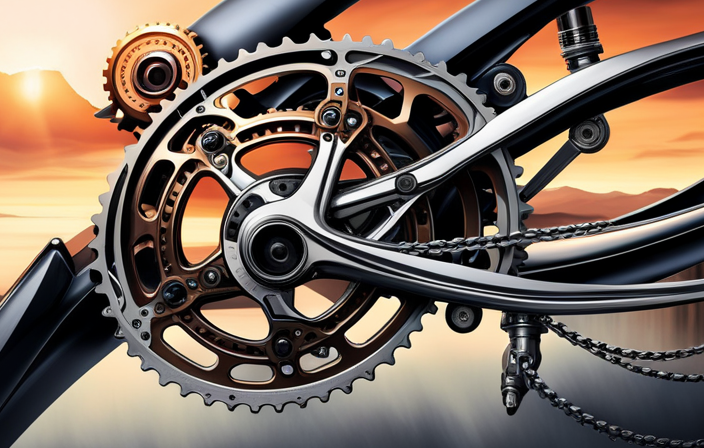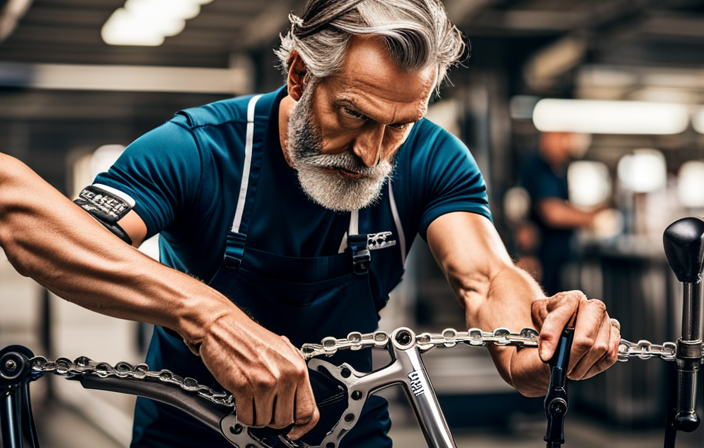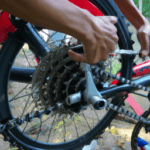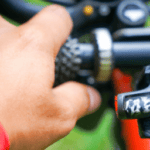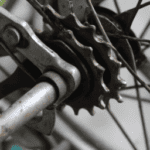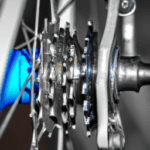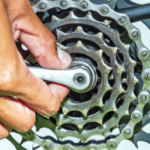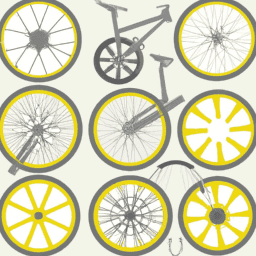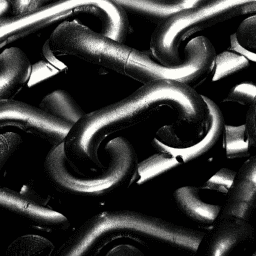Are you aware that the derailleur, a small but essential part of a bicycle, can greatly impact your ride in terms of smoothness and efficiency? By allowing you to shift gears and improve performance, the derailleur is key in guaranteeing a smooth cycling experience.
In this article, I will delve into the world of derailleurs, exploring their purpose, functionality, history, and different types. By the end, you’ll have a comprehensive understanding of this essential bicycle mechanism.
Key Takeaways
- Regular maintenance and cleaning of the derailleur is essential for extending its lifespan.
- Upgrading options are available to improve shifting performance and enhance the cycling experience.
- Proper alignment of the derailleur is crucial for smooth shifting, preventing damage, and ensuring optimal performance and longevity.
- When choosing a derailleur, factors such as gear ratio, durability, compatibility with the drivetrain system, and personal biking needs should be considered.
The Purpose of a Derailleur on a Bicycle
If you’re riding a bicycle, you’ll need a derailleur to shift gears and change the resistance on your bike. The purpose of a derailleur is to allow you to easily switch between different gear ratios, enabling you to conquer various terrains and ride at different speeds.
The benefits of using a derailleur on a bicycle are numerous. Firstly, it provides a wide range of gear options, allowing you to find the perfect gear for any situation. This can greatly improve your efficiency and make hill climbing easier.
However, there are also some disadvantages to using a derailleur. They require regular maintenance and adjustment to ensure smooth and accurate shifting. Additionally, they are exposed and can be prone to damage from debris or crashes.
Understanding the purpose and pros and cons of a derailleur sets the stage for understanding how it works.
How a Derailleur Works
To understand how it works, you need to know that a derailleur on a bike shifts the chain between different gears. The derailleur is a complex mechanism that requires regular maintenance to ensure optimal performance.
Here are three key aspects of how a derailleur works:
-
Tensioning: The derailleur has a spring that applies tension to the chain, keeping it in place and preventing it from skipping off the gears.
-
Shifting: When you operate the shifters on the handlebars, the derailleur moves the chain up or down the cassette, allowing you to change gears.
-
Alignment: The derailleur needs to be properly aligned with the gears to ensure smooth shifting. Misalignment can cause shifting issues and chain slippage.
To troubleshoot derailleur issues, check for any loose or damaged parts, adjust the cable tension, and ensure the derailleur hanger is straight.
Now let’s delve into the history of derailleurs and how they have evolved over time.
The History of Derailleurs
The history of derailleurs reveals how these mechanisms have undergone significant advancements over time. The evolution of derailleurs can be traced back to the late 19th century when the first rudimentary designs were developed. These early derailleurs were simple in design and had limited functionality.
However, as bicycle technology progressed, so did the derailleurs. The introduction of indexed shifting in the mid-20th century revolutionized the way derailleurs worked, allowing for more precise and reliable gear changes. This advancement had a profound impact on bicycle racing, as it enabled riders to quickly and efficiently switch gears, optimizing their performance on different terrains.
The history of derailleurs showcases how these mechanisms have continuously improved, making them an essential component of modern bicycles.
Moving on to the next section about the different types of derailleurs…
The Different Types of Derailleurs
There are various types of derailleurs available for different cycling needs. When it comes to choosing the right derailleur, one must consider factors such as the type of bike, terrain, and personal preference. Different derailleur brands offer a range of options, each with their own unique features and advantages. To help visualize the variety, here is a 2 column and 4 row table showcasing different types of derailleurs:
| Type | Advantages |
|---|---|
| Traditional | Affordable and easy to maintain |
| Mountain | Suitable for rough terrains |
| Road | Lightweight and optimized for speed |
| Electronic | Precise shifting and customization |
Among these options, electronic derailleurs have gained popularity due to their advanced technology. They offer precise and instantaneous shifting, allowing for seamless gear changes. Electronic derailleurs also provide customization options, allowing riders to fine-tune their shifting preferences. Understanding gear ratios is crucial for optimizing performance on a bicycle.
Understanding Gear Ratios
Understanding gear ratios is crucial for maximizing performance on a bike. When it comes to gear shifting techniques, the right gear ratio can make all the difference. Here are five advantages of different gear ratios:
- Improved climbing ability: Lower gear ratios provide more torque, making it easier to tackle steep inclines.
- Increased speed on flat terrain: Higher gear ratios allow for a faster pedaling cadence, ideal for maintaining speed on level ground.
- Efficient power transfer: Finding the right gear ratio ensures that the power generated by your legs is effectively transferred to the bike’s drivetrain.
- Reduced muscle fatigue: Optimal gear ratios can help prevent muscle strain and fatigue, enabling longer rides.
- Customized riding experience: Adjusting gear ratios allows riders to tailor their efforts based on personal preference and terrain conditions.
Understanding gear ratios lays the foundation for shifting gears properly and optimizing performance on a bicycle.
How to Shift Gears Properly
Now that we understand gear ratios, let’s talk about how to shift gears properly. Shifting techniques are crucial for a smooth and efficient ride.
When shifting, it’s important to anticipate the terrain and adjust your gears accordingly. Start by easing off the pressure on the pedals, then use your shifters to move the chain onto the desired gear. Remember to shift one gear at a time and avoid cross-chaining, which is using extreme gear combinations.
If you encounter any issues while shifting, such as gears not engaging or slipping, there are a few troubleshooting steps you can take. Check if the derailleur hanger is straight, ensure proper cable tension, and inspect the condition of your chain and cassette.
By following these shifting techniques and troubleshooting tips, you can optimize your gear shifting experience.
Now, let’s move on to common issues with derailleurs and how to fix them.
Common Issues with Derailleurs and How to Fix Them
If you’re experiencing issues with your gears not shifting smoothly, here are some common problems with derailleurs and how to fix them.
One common issue is a misaligned derailleur. This can cause the chain to rub against the derailleur cage, resulting in poor shifting performance. To fix this, simply adjust the derailleur’s position by loosening the derailleur clamp bolt and aligning it with the smallest chainring.
Another problem could be a dirty or worn jockey wheel. Over time, dirt and grime can accumulate on the jockey wheel, causing it to spin less smoothly. Cleaning or replacing the jockey wheel can resolve this issue.
Lastly, a loose derailleur hanger can also cause shifting problems. Ensure that the derailleur hanger is securely tightened to the frame to prevent any wobbling.
Maintaining and cleaning your derailleur regularly will help prevent these issues and keep your gears shifting smoothly.
Maintaining and Cleaning Your Derailleur
To keep your gears shifting smoothly, it’s important to regularly maintain and clean your derailleur. Here are some cleaning techniques and troubleshooting tips to keep your derailleur in top shape:
-
Start by removing the chain from the derailleur and using a degreaser to clean the pulley wheels. Scrub them gently with a brush to remove any built-up dirt or grime.
-
Next, use a damp cloth or a soft-bristled brush to clean the derailleur body, jockey wheels, and the chain guide. Be sure to get into all the nooks and crannies to remove any dirt or debris.
-
Once everything is clean, dry the derailleur thoroughly to prevent rust.
-
If you encounter any issues with shifting or the derailleur getting stuck, check for loose bolts or misaligned parts. Adjust them as needed to ensure smooth operation.
By regularly maintaining and cleaning your derailleur, you can extend its lifespan and enjoy better performance.
Upgrading Your Derailleur for Better Performance
Consider upgrading your derailleur to enhance your cycling experience and improve performance. There are various upgrading options available in the market that can take your bike’s shifting capabilities to the next level.
Before making a decision, it is essential to understand the compatibility issues that may arise. Different derailleur models are designed to work with specific drivetrain components, such as the number of gears and the chain width. It is crucial to ensure that the upgraded derailleur is compatible with your bike’s existing setup.
Upgrading your derailleur can result in smoother and more precise shifting, improved durability, and reduced weight. Additionally, some higher-end derailleur models offer advanced features like adjustable tension and increased gear range. These upgrades can significantly enhance your overall cycling performance.
Now, let’s move on to the next section for tips on adjusting your derailleur.
Tips for Adjusting Your Derailleur
When adjusting your derailleur, start by checking the alignment of the jockey wheels. Ensure that they are in line with each other and parallel to the cassette cogs.
Next, check the cable tension by shifting the chain onto the smallest chainring and the smallest cassette cog. If the chain doesn’t shift smoothly, adjust the barrel adjuster until it does.
To troubleshoot common derailleur issues, inspect the derailleur hanger for any damage or misalignment. Additionally, check the limit screws to make sure they are properly adjusted.
If you are still experiencing issues, try cleaning the derailleur and lubricating the moving parts.
Finally, make sure the derailleur is properly aligned with the cassette cogs to ensure smooth shifting performance.
Proper derailleur alignment is essential for efficient gear shifting and prevents unnecessary wear on the drivetrain.
The Importance of Proper Derailleur Alignment
Make sure your gears are aligned properly to ensure smooth shifting and prevent damage to your drivetrain. Proper derailleur maintenance is crucial for optimal performance and longevity of your bike. Troubleshooting derailleur issues can be frustrating, but with the right knowledge, you can easily fix common problems. Refer to the table below for a quick reference guide on troubleshooting derailleur issues:
| Issue | Possible Cause | Solution |
|---|---|---|
| Chain skipping | Misaligned derailleur hanger | Adjust derailleur hanger or replace if necessary |
| Excessive noise | Dirty or worn jockey wheels | Clean or replace jockey wheels |
| Slow shifting | Cable tension too tight or loose | Adjust cable tension accordingly |
Maintaining your derailleur alignment will not only improve your shifting experience but also prevent unnecessary wear and tear on your bike. In the next section, we will discuss how to choose the right derailleur for your bike, ensuring optimal performance.
How to Choose the Right Derailleur for Your Bike
To ensure optimal performance on your bike, it’s important to select the right derailleur. When choosing derailleur options, there are several factors to consider. Here is a three-item numeric list to guide you:
-
Gear Ratio: Different derailleur brands offer varying gear ratios, which determine how easily you can shift between gears. Consider your riding style and terrain to determine the appropriate gear ratio for your needs.
-
Durability: Look for a derailleur that is made from high-quality materials and has a robust construction. This will ensure its longevity and resistance to wear and tear.
-
Compatibility: Check the compatibility of the derailleur with your bike’s drivetrain system. Different brands and models may have specific requirements, so it’s crucial to choose one that is compatible with your bike.
When comparing derailleur brands, take into account these factors to make an informed decision. Understanding the nuances of each brand will help you choose the derailleur that suits your biking needs.
Transitioning into the subsequent section about the role of derailleurs in mountain biking, it’s essential to understand the specific requirements of off-road riding.
The Role of Derailleurs in Mountain Biking
If you’re into mountain biking, understanding the role of derailleurs is crucial for optimal performance on the trails. Derailleurs play a vital role in mountain biking by allowing riders to quickly and efficiently change gears, enabling them to conquer varying terrains and gradients.
In road biking, derailleurs are equally important as they facilitate smooth shifting between gears, ensuring a seamless and efficient ride. The benefits of using a derailleur system in cycling competitions are numerous. Firstly, derailleurs provide a wide range of gear ratios, allowing cyclists to adapt to different conditions, from steep climbs to fast descents. Additionally, the lightweight nature of derailleurs enhances the bike’s overall performance, enabling riders to accelerate and maintain higher speeds. With their precise and responsive gear changes, derailleurs give cyclists the competitive edge they need.
Transitioning into the next section about the pros and cons of derailleurs vs. internal gear hubs, it’s important to weigh the advantages and disadvantages of each system.
The Pros and Cons of Derailleurs vs. Internal Gear Hubs
One advantage of using derailleurs is their wide range of gear ratios, allowing cyclists to easily switch between different gears to adapt to various terrains and riding conditions. This versatility is especially beneficial in mountain biking, where riders often encounter steep inclines and challenging obstacles. However, it is important to consider the pros and cons of derailleurs compared to internal gear hubs. While derailleurs offer a greater range of gear options, they require more maintenance and are more prone to damage from external elements. On the other hand, internal gear hubs provide a more streamlined and low-maintenance option, but they typically have a limited gear range. To help visualize the differences, here is a comparison table:
| Derailleurs | Internal Gear Hubs | |
|---|---|---|
| Pros | Wide gear range | Streamlined and low-maintenance |
| Cons | Maintenance required | Limited gear range |
As we move on to frequently asked questions about derailleurs, let’s delve into the inner workings of this essential bicycle component.
Frequently Asked Questions about Derailleurs
Got questions about derailleurs? We’ve got answers!
When it comes to gear ratio calculations, derailleurs play a crucial role in determining the speed and efficiency of your bicycle. By shifting the chain onto different gears, the derailleur allows you to adjust the resistance and find the optimal gear for your riding conditions.
However, like any mechanical component, derailleurs can encounter problems. If you’re experiencing issues such as chain skipping or difficulty shifting, troubleshooting common derailleur problems can help.
Start by checking the alignment of the derailleur hanger and ensuring that the derailleur is properly lubricated. Additionally, inspect the cables and housing for any signs of wear or damage.
By diagnosing and addressing these common issues, you can keep your derailleur functioning smoothly and enjoy a seamless riding experience.
Frequently Asked Questions
Can I use a derailleur on a single-speed bike?
Yes, a derailleur can be used on a single-speed bike. However, it may not provide the same benefits as on a multi-speed bike. The main advantage of a derailleur is its ability to change gears, which is not necessary on a single-speed bike.
What is the maximum number of gears that a derailleur can handle?
The maximum number of gears that a derailleur can handle depends on the specific model and design. However, modern derailleurs can typically handle up to 12 or even 13 gears, making them compatible with a wide range of drivetrain systems.
Are there any alternatives to derailleurs for shifting gears on a bicycle?
There are alternatives to derailleurs for shifting gears on a bicycle, such as internal gear hubs. Internal gear hubs offer advantages like low maintenance, protection from the elements, and seamless shifting without the need for external components.
Can I use a derailleur on a fixed-gear bike?
Using a derailleur on a fixed-gear bike is like trying to fit a square peg into a round hole. Pros include gear options and versatility, but cons include complexity and potential damage to the frame. Converting a fixed gear bike requires adding derailleur hangers and cable stops.
Are derailleurs only used on traditional diamond-frame bicycles, or can they be used on other types of bikes as well?
Derailleur options for electric bikes vary based on different types of derailleurs available for various bike frames. Derailleurs can be used on a variety of bikes, not just traditional diamond-frame bicycles.
Conclusion
As I delved into the world of derailleurs, I was amazed by their intricate design and functionality. These incredible devices are the unsung heroes of our bicycles, seamlessly shifting gears and ensuring a smooth ride.
From the early days of the first derailleurs to the diverse range of options available today, this essential component has come a long way.
But there’s more to discover – how do derailleurs fare in mountain biking? And what about the ongoing debate between derailleurs and internal gear hubs?
Stay tuned, for the answers lie just around the corner.
